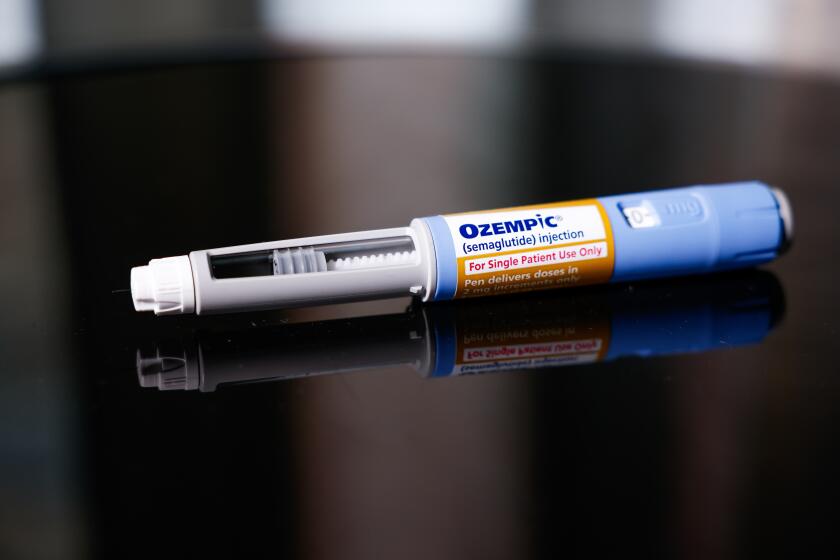Shoppers Return to Gap, Other Retailers
Just weeks after taking the top job at Gap Inc., Chief Executive Paul Pressler already can take credit for at least one brilliant decision: signing on when he did.
In October, for the first time in 2 1/2 years, the San Francisco-based owner of the Gap, Old Navy and Banana Republic apparel stores posted a sales increase in stores open at least a year.
The 11% gain was far better than expected -- a showing reflected throughout the retail sector last month, with cold weather and pent-up demand driving consumers to spend after months of languid buying.
Pressler certainly isn’t taking credit for the jump -- and isn’t talking publicly about the company’s performance or plans -- as Gap’s strong sales on full-price goods highlight the turnaround efforts of his predecessor, Millard “Mickey” Drexler.
“October’s results are a good sign for the holiday, and I’m much more upbeat because of it,” said Michael Niemira, senior economist at Bank of Tokyo-Mitsubishi in New York.
Gap shares rose 65 cents to $13.42 on the New York Stock Exchange.
Several other retailers, in reporting October sales results Thursday, cited strength in moving full-price items, particularly in apparel.
Pacific Sunwear of California Inc. led the pack with an 18.6% increase; J.C. Penney Co., Nordstrom Inc., Pacific Sunwear of California Inc., and Gottschalks Inc. posted above-average gains for the month.
Clothing sellers have suffered over the last several months as consumers -- uninterested in the fashion offerings and worried about the economy and a possible war with Iraq -- pulled back on spending.
October’s sales numbers offered solace to economists, who have worried about the weakened retail sector because consumer spending has been one of the economy’s few bright spots.
Still, consumer spending for the rest of the year will be hard to predict and even tougher to analyze.
This year’s late Thanksgiving -- the holiday that marks the traditional start of the holiday shopping season -- will skew results over the next two months, shifting most Christmas sales into December and making November appear artificially weak.
“How does the industry motivate the consumer over the next two months, since they have no control over the weather?” Niemira said. “We are likely to go through a choppy period here and we won’t be able to assess it well until after the season is over.”
Gap said gains came at each of its brands and in spite of lower traffic. That’s proof that new merchandise initiatives at Gap, put into place by former CEO Drexler, are finally taking hold, analysts said.
“It’s not fair to say everything is back on track and [Pressler’s] job is easy, but Mickey Drexler may have set the table for him,” said Todd Slater, an analyst with Lazard in New York.
Those changes include targeting the clothes, particularly at Gap, at a slightly older consumer. Some of Gap and Old Navy’s most loyal customers had complained last year that the offerings seemed to target teenagers, and moved too far away from the updated classics they had come to expect from the company.
Analysts said it will fall to Pressler, a former executive with Walt Disney Co., to make broader systemic changes, including store refurbishments and closures and improvements in the supply chain.
“There is still so much work to do,” Slater said. “This business is far from fixed and there is an enormous amount of renovation that needs to occur.”
Overall in October, retail sales rose 3.1% compared with a year ago, according to the Bank of Tokyo-Mitsubishi chain store sales index.
Goldman Sachs, which cited a 2.5% gain in its retail composite index, noted the particularly surprising results among the specialty apparel and discount clothing sellers.
That group posted same-store sales gains of 5.1% over October 2001, as cold weather in much of the country sent consumers looking for warmer clothing. Goldman Sachs had expected a 1.1% decline among the specialty group.
Same-store sales, or sales from stores open at least a year, are a key measure of a retailer’s health because the figure excludes new and closed stores, which can skew results.
Like Gap, teen clothiers also benefited from shoppers’ desire for new merchandise.
Anaheim-based Pacific Sunwear raised third-quarter earnings guidance to 47 cents to 48 cents a share, well ahead of the 40-cent consensus estimate posted by Thomson First Call.
More to Read
Inside the business of entertainment
The Wide Shot brings you news, analysis and insights on everything from streaming wars to production — and what it all means for the future.
You may occasionally receive promotional content from the Los Angeles Times.










